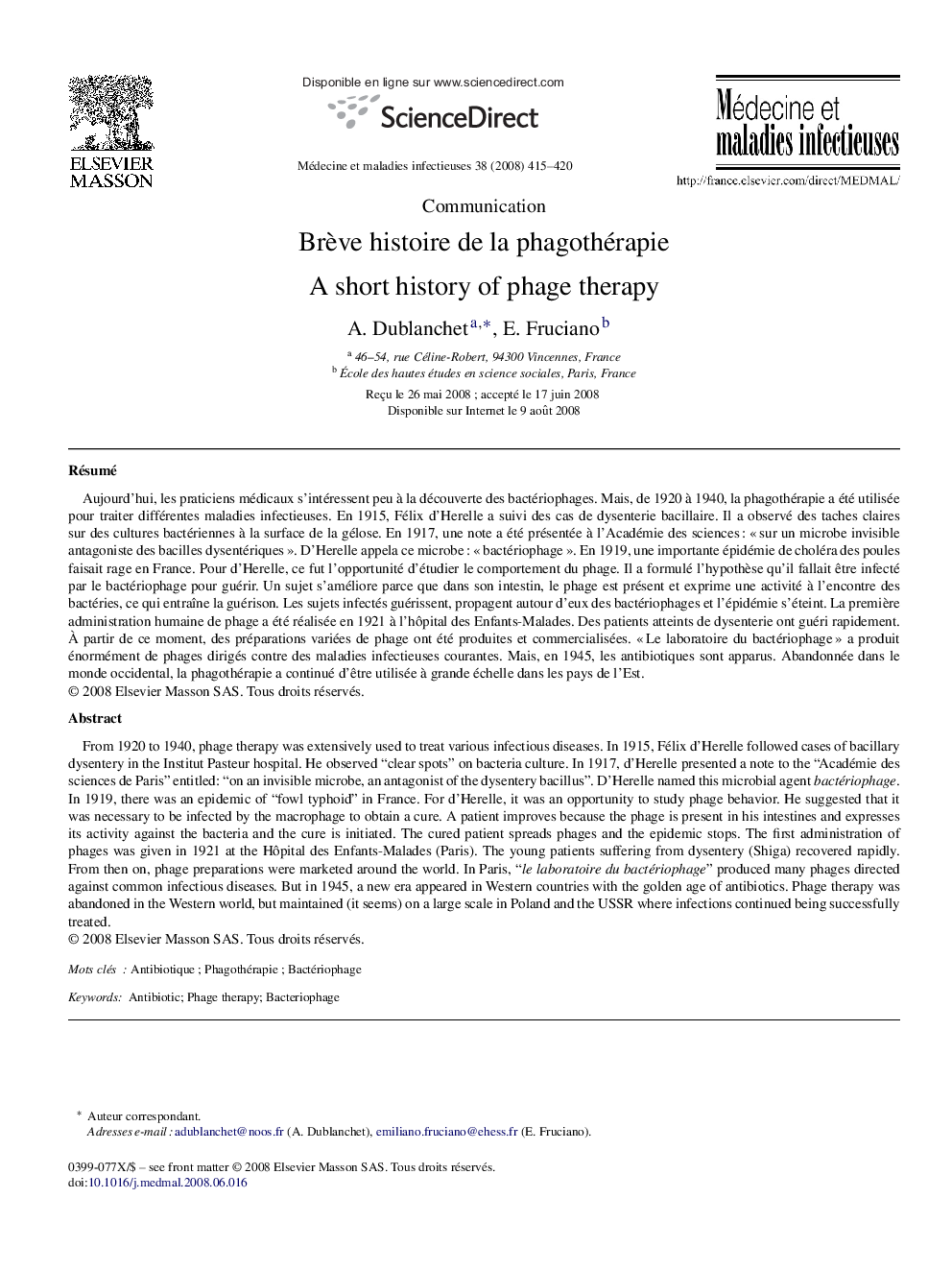| Article ID | Journal | Published Year | Pages | File Type |
|---|---|---|---|---|
| 3413976 | Médecine et Maladies Infectieuses | 2008 | 6 Pages |
RésuméAujourd’hui, les praticiens médicaux s’intéressent peu à la découverte des bactériophages. Mais, de 1920 à 1940, la phagothérapie a été utilisée pour traiter différentes maladies infectieuses. En 1915, Félix d’Herelle a suivi des cas de dysenterie bacillaire. Il a observé des taches claires sur des cultures bactériennes à la surface de la gélose. En 1917, une note a été présentée à l’Académie des sciences : « sur un microbe invisible antagoniste des bacilles dysentériques ». D’Herelle appela ce microbe : « bactériophage ». En 1919, une importante épidémie de choléra des poules faisait rage en France. Pour d’Herelle, ce fut l’opportunité d’étudier le comportement du phage. Il a formulé l’hypothèse qu’il fallait être infecté par le bactériophage pour guérir. Un sujet s’améliore parce que dans son intestin, le phage est présent et exprime une activité à l’encontre des bactéries, ce qui entraîne la guérison. Les sujets infectés guérissent, propagent autour d’eux des bactériophages et l’épidémie s’éteint. La première administration humaine de phage a été réalisée en 1921 à l’hôpital des Enfants-Malades. Des patients atteints de dysenterie ont guéri rapidement. À partir de ce moment, des préparations variées de phage ont été produites et commercialisées. « Le laboratoire du bactériophage » a produit énormément de phages dirigés contre des maladies infectieuses courantes. Mais, en 1945, les antibiotiques sont apparus. Abandonnée dans le monde occidental, la phagothérapie a continué d’être utilisée à grande échelle dans les pays de l’Est.
From 1920 to 1940, phage therapy was extensively used to treat various infectious diseases. In 1915, Félix d’Herelle followed cases of bacillary dysentery in the Institut Pasteur hospital. He observed “clear spots” on bacteria culture. In 1917, d’Herelle presented a note to the “Académie des sciences de Paris” entitled: “on an invisible microbe, an antagonist of the dysentery bacillus”. D’Herelle named this microbial agent bactériophage. In 1919, there was an epidemic of “fowl typhoid” in France. For d’Herelle, it was an opportunity to study phage behavior. He suggested that it was necessary to be infected by the macrophage to obtain a cure. A patient improves because the phage is present in his intestines and expresses its activity against the bacteria and the cure is initiated. The cured patient spreads phages and the epidemic stops. The first administration of phages was given in 1921 at the Hôpital des Enfants-Malades (Paris). The young patients suffering from dysentery (Shiga) recovered rapidly. From then on, phage preparations were marketed around the world. In Paris, “le laboratoire du bactériophage” produced many phages directed against common infectious diseases. But in 1945, a new era appeared in Western countries with the golden age of antibiotics. Phage therapy was abandoned in the Western world, but maintained (it seems) on a large scale in Poland and the USSR where infections continued being successfully treated.
